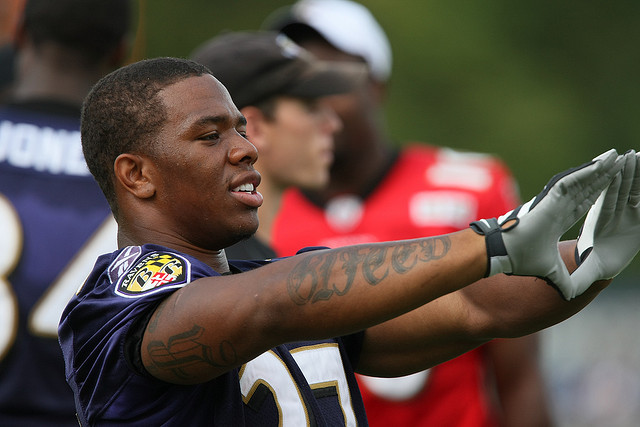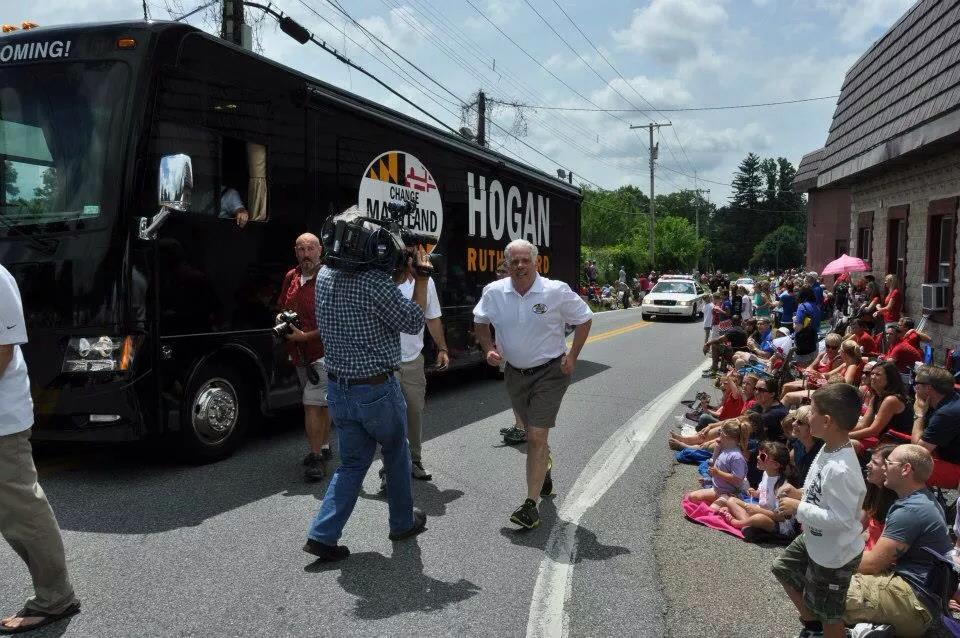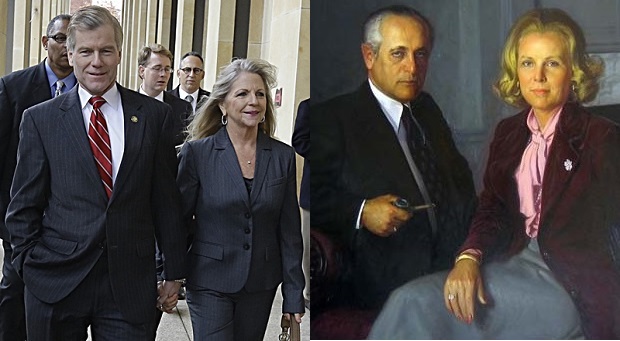By Barry Rascovar
For MarylandReporter.com
Maryland’s Republican governor, Larry Hogan, Jr., has done all in his power to separate himself from the new, controversial Republican president, Donald Trump.
Given Trump’s unpopularity in Maryland – he lost by a whopping 25% in November – that wall of separation keeps Hogan in good stead with most voters in this top-heavy Democratic state.
His popularity remains sky-high and Hogan continues to skirt controversial social issues that could bring him trouble with liberal voters while losing the backing of GOP conservatives.
His prime objective is getting reelected in 2018 while dragging in with him enough Republican legislators to ensure a veto-proof state Senate.
Then Hogan would have more leverage and ability to help the state GOP turn the corner in Maryland and become a truly viable statewide alternative to Democrat hegemony.
But that scenario could blow up in Hogan’s face through no fault of his own.
Trump referendum?
The 2018 election is looking more and more like a national referendum on Donald Trump’s manic, unpredictable presidency. If that become the case, Hogan’s continuation in office could hang by a thread.
The beginning of the end for Hogan may have commenced last week with House Speaker Paul Ryan’s rush to eliminate Obamacare and replace it with a haphazard health-care insurance program that punishes the lower-middle class, the poor and citizens nearing retirement age.
It also is sending the nation’s health-insurance industry into a prolonged period of chaotic uncertainty. The result could be a rapid pullout next year by insurers from what’s left of Obamacare to avoid gigantic losses caused by the program’s slow, agonizing demise mandated by Ryan’s legislation.
Cutting financing supports out from under Obamacare also would devastate state health budgets. Hundreds of thousands of Marylanders now receiving health insurance subsidies or care through Medicaid could be cut off without the resources to afford health-care protection.
Ryan’s plan calls for Maryland and other states to receive far less to support their health insurance programs. Hospitals could be flooded by non-paying patients with nowhere else to go. Preventive health care, a key component of Obamacare, would disappear, and people would show up at emergency rooms needing far more costly medical treatment.
Bad timing
For Hogan, the timing couldn’t be worse. By next year, Maryland’s entire health care network could face an unprecedented financial and medical crisis. Maryland’s health expenditures could balloon, and many of the state’s citizens could be panicking over the loss of their medical safety net.
That’s a recipe for problems at the polls in November 2018.
Unfortunately for Hogan, this could be just the initial blow coming from Trump’s Washington.
Sweeping federal layoffs this year and next seem in the cards. Comptroller Peter Franchot wrote down state revenue estimates for the next 18 months by $32 million and warned of the likelihood of major job losses in federal agencies employing hundreds of thousands of Free State citizens.
Aid programs affecting all aspect of the Maryland economy are at risk, from housing assistance critical in poor communities like Baltimore and rural Maryland to severe reductions in funding for the Coast Guard that could hurt the state’s important maritime economy and policing of the Chesapeake Bay.
Maryland impact
Massive budget cuts in the space program, food and drug enforcement, agriculture, the Census Bureau, the Medicaid agency, education aid, medical research and environmental protection would reverberate in Maryland, home to many of these agencies.
All of this is terrible news for Hogan.
He’s got nothing to do with what Trump and his Republican allies are foisting on the American public. Yet he may end up paying the ultimate political price.
Let’s face it. Hogan’s 2014 election victory was a fluke, the result of a well-run campaign and exceedingly good luck: Democrats nominated a historically bad candidate (Lt. Gov. Anthony Brown, now a member of Congress) who ran one of the worst-ever gubernatorial campaigns.
Given Maryland’s 2-1 Democratic voter registration edge, Hogan’s re-election was always less than certain, even with his high poll numbers. Inflame the state’s Democratic voters and any Republican, even an incumbent, could have big problems.
So if Marylanders are infuriated with Trump & Friends; if hundreds of thousands are scared, angry and afraid of having little or no health coverage; if the state’s large federal workforce endures unprecedented layoffs and spending cuts, and if Democrats are so enraged they take out their fury on Election Day, Hogan had better prepare for the worst.
Déjà vu?
It’s happened before.
In 2006, Republican Gov. Bob Ehrlich enjoyed exceptionally high polling numbers right up till the general election. Most people said Ehrlich had done a pretty good job. Yet he lost by 6 percentage points – nearly 120,000 votes.
How could that happen?
Ehrlich’s loss was linked to the unpopularity of a Republican president, George W. Bush, saddled with a wobbly economy, a flagging war on terrorism, an unnecessary, trumped-up war against Saddam Hussein in Iraq and ineptness in the White House.
By the November 2006 election, Bush’s poll rating – which hit 90% after the 2011 terrorist bombings, had plunged to 38%. (It would continue to sink to a low of 25%).
Voters wanted to send him a message – and in Maryland the only way to do that was by voicing disapproval of the top Republican candidate on the ballot that year – Bob Ehrlich.
Hogan should be alarmed that Donald Trump’s approval rating as of two weeks ago was just 38% – identical to Bush’s low appeal in 2006. The Obamacare controversy and the new president’s angry Twitter insults, unsubstantiated allegations and inflammatory rhetoric could shrink Trump’s approval numbers to record lows for an American president.
Should 2016 turn into a “message” election, Larry Hogan’s “good guy” image and Marylanders’ lack of animus toward him may prove all but worthless.
He could well become, for state voters, Donald Trump’s surrogate on the ballot.
It could be 2006 all over again in Maryland.
Barry Rascovar’s blog is www.politicalmaryland.com. He can be contacted at [email protected].






You are a horrible journalist, and this is a horrible article. Rather than list all the reasons why, I’ll just highlight one of the more egregious ways in which you have failed to do any actual research to back up your claims, which is supposed to be part of your job. “In 2006, Republican Gov. Bob Ehrlich enjoyed exceptionally high polling numbers right up till the general election.” The highest approval rating Gov Ehrlich ever achieved was 57%, 1% below the highest for Gov. O’Malley (58%). Clearly these numbers are NOT exceptional. Gov. Hogan has achieved approval ratings as high as 74%, which clearly IS exceptional. A simple Google search for these numbers turned up an article FROM MARYLAND REPORTER by actual journalist Len Lazarick (published Jan 19th, 2016). If you are going to squeeze out these turds every week trying to link Trump to Hogan, at least do a little homework first.
I don’t think Rascovar’s scenario (significant revenue loss and major service cutbacks) is likely. If I’m wrong and Hogan loses his re-election bid he (Hogan) would NOT be “…paying the ultimate price.” The term “pay the ultimate price” is relevant only to democrats over the age of 65.